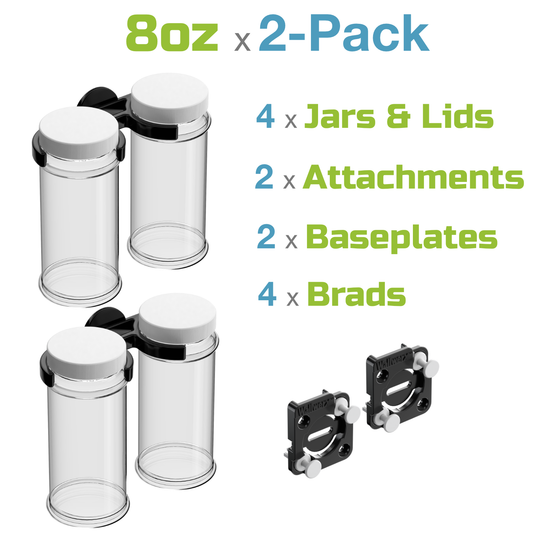Table of Contents
What is an assembly table?
An assembly table is a work surface used for the assembly of parts or components into larger assemblies or products. It is typically found in a factory or workshop setting and is used to hold and organize the parts and tools needed for assembly. Assembly tables can be custom-made or purchased as pre-made units, and they may include features such as clamps, vices, and adjustable height to facilitate the assembly process.
What are some common attachments and accessories used with an assembly table?
Some common attachments and accessories used with an assembly table include:
- Clamps: These are used to hold parts securely in place while they are being assembled.
- Vices: These are used to hold and secure workpieces while they are being drilled, sawed, or worked on in some other way.
- Adjustable height: Some assembly tables have adjustable legs or a mechanism that allows the height of the table to be adjusted, making it more comfortable for the worker to use.
- Drawers, shelves and pegboards These can be used to organize and store parts, tools, and other materials needed for assembly.
- Lighting: Additional lighting can be added to the assembly table to provide better visibility of the workpiece.
- Power outlets: Some assembly tables have built-in power outlets for powering tools and equipment.
- Magnifying lenses: These can be mounted on the table to aid in precision work.
- Benchtop organizers: These are small trays, holders and compartments that can be attached to the table to organize small parts, tools and hardware.
- Mobile base: Some assembly tables come with wheels so that they can be easily moved around the workshop or factory.
How long is a two person assembly table?
The length of a two-person assembly table can vary depending on the manufacturer and the specific model. Generally, a two-person assembly table is designed to accommodate two people working side by side. A standard size for this type of table is 8 feet long (2.4 meters) and about 2.5-3 feet wide (76-91cm) which allows for ample space for two people to work comfortably together. However, it’s not uncommon to find assembly tables that are longer or shorter than 8 feet, or even custom-made assembly tables that are built to specific dimensions. The size of the table will depend on the needs of the particular application and the space available in the workshop or factory.
What is a good height for an assembly table?
A good height for an assembly table will vary depending on the user and the specific task being performed. However, there are some general guidelines that can be followed to determine a comfortable and ergonomic height for an assembly table.
A standard work surface height for assembly tables is around 30-34 inches (76-86 cm) from the floor. This height allows the worker to comfortably stand and work at the table without having to bend over or reach up. This standard height is suitable for most people, but it may not be ideal for individuals who are particularly tall or short.
For taller workers, a height-adjustable table can be beneficial, allowing them to raise the table to a comfortable working height. Similarly, for shorter workers, a lower height table or an adjustable height table can be beneficial, allowing them to lower the table to a comfortable working height.
It’s also important to consider the task being performed on the table, for example, if the task requires to be seated, then the table should have a height that allows the worker to comfortably sit while working.
It’s also important to consider the task being performed on the table, for example, if the task requires to be seated, then the table should have a height that allows the worker to comfortably sit while working.
In general, it’s a good idea to try out different table heights and adjust as needed to find a comfortable and ergonomic height for the individual worker and the task at hand.
How should small items be stored and organized at an assembly table?
Small items such as screws, nuts, bolts, and other hardware can be stored and organized at an assembly table in a variety of ways. Some of the most common methods include:
- Drawers or shelves: These can be built into the assembly table or added as attachments to keep small items organized and easily accessible.
- Compartments and trays: These can be added to the table to create small compartments and trays for organizing different types of hardware.
- Plastic bins or containers: These can be used to store small items and can be labeled to make it easy to find the specific item needed.
- Tool belts or aprons: These can be worn by the worker and can have compartments or pockets for storing small items.
- Magnetic holders: These can be attached to the table or other nearby surfaces to hold small metal items such as screws, nails or drill bits.
- Benchtop organizers: These are small trays, holders and compartments that can be attached to the table to organize small parts, tools and hardware.
- Labels or color coding: This can be used to identify different types of hardware and make it easy to find the specific item needed.
What are some floor layout examples for production assembly spaces that include assembly tables?
There are several different floor layout examples for production assembly spaces that include assembly tables, depending on the size and complexity of the operation. Some examples include:
- Linear layout: This is a simple layout in which assembly tables are arranged in a straight line. This is a good option for small operations with a limited number of products.
- U-shaped layout: This layout features assembly tables arranged in a U-shape, with aisles in between. This is a good option for larger operations and allows for easy movement and access to all tables.
- Cell layout: This layout features a group of assembly tables arranged together to form a “cell” for a specific product or group of products. This is a good option for operations that produce a variety of products and allows for easy reconfiguration of the assembly process as needed.
- Process-oriented layout: This layout is based on the assembly process, where assembly tables are arranged in the order of the process. This is a good option for operations that have a specific process flow for assembly.
- Combination layout: This is a combination of two or more of the above layout types. This can be useful for operations that have a variety of products and assembly processes.
How long should someone stand at an assembly table?
Standing for prolonged periods of time can put strain on the legs, feet, back, and other parts of the body. Therefore, the recommended time to stand at an assembly table will vary depending on the individual worker and the specific task being performed.
The Occupational Safety and Health Administration (OSHA) recommends taking frequent breaks to shift positions, stretch, and move around. A good rule of thumb is to take a break every hour and to take a longer break every two hours.
It’s also important to consider the worker’s overall health and fitness level when determining how long they should stand at an assembly table. Individuals who have a history of back or leg problems, for example, may need to take more frequent breaks or may need to use a stool or chair to reduce the amount of time spent standing.
Additionally, the design of the assembly table can also play a role in determining how long someone should stand, for example, an adjustable height table allows the worker to adjust the table to a comfortable working height, reducing the strain on the body.
Ultimately, it’s important to listen to your body and take breaks as needed to prevent fatigue and discomfort. It’s also important to keep in mind that standing for prolonged periods of time can increase the risk of long-term health issues, such as varicose veins, and back pain.
What are some alternative modes to standing at an assembly table?
There are several alternative modes to standing at an assembly table, including:
- Sitting: This can be done by using a stool or chair at the assembly table. Sitting can reduce the strain on the legs and lower back, but it can also lead to other issues such as back pain and poor posture if the chair or stool is not adjusted to the right height.
- Standing on an anti-fatigue mat: This can provide cushioning and support for the feet and legs, reducing the strain caused by standing for prolonged periods of time.
-
Leaning: Leaning against the table or using a leaning stool can provide support for the back and reduce the strain caused by standing.
- Alternating between sitting and standing: This can be done by using a height-adjustable table or a sit-stand desk that can be easily adjusted between sitting and standing positions. This allows the worker to change positions frequently and reduce the strain on the body.
- Using a balance board: A balance board can help to engage the core and leg muscles, reducing the strain of standing.
It’s important to consider the specific task being performed and the worker’s individual needs when determining the best mode of working at an assembly table.
How close should assembly items and materials be stored to the standing position at an assembly table?
The proximity of assembly items and materials to the standing position at an assembly table should be determined based on the specific task being performed and the worker’s individual needs.
In general, it’s important to keep assembly items and materials within easy reach of the worker to minimize the amount of time spent reaching or walking to retrieve them. This can help to increase efficiency and reduce the risk of strain or injury.
For example, for tasks that require frequent use of small items, such as screws or nuts, it may be beneficial to have a tray or compartment built into the table or mounted nearby to hold these items. Similarly, for tasks that require the use of larger items, such as power tools or other equipment, it may be beneficial to have these items stored close to the table or mounted on a nearby wall.
It’s also important to consider the amount of space available and to arrange the assembly items and materials in an organized and logical manner to minimize clutter and increase efficiency.
Additionally, it’s important to provide enough space to move around the table and other equipment, to prevent accidents and injuries. A good rule of thumb is to have at least 36 inches (91 cm) of clearance space around the assembly table.
In summary, assembly items and materials should be stored close to the standing position at an assembly table, within easy reach of the worker, in an organized and logical manner, and with enough space to move around the table and other equipment.








